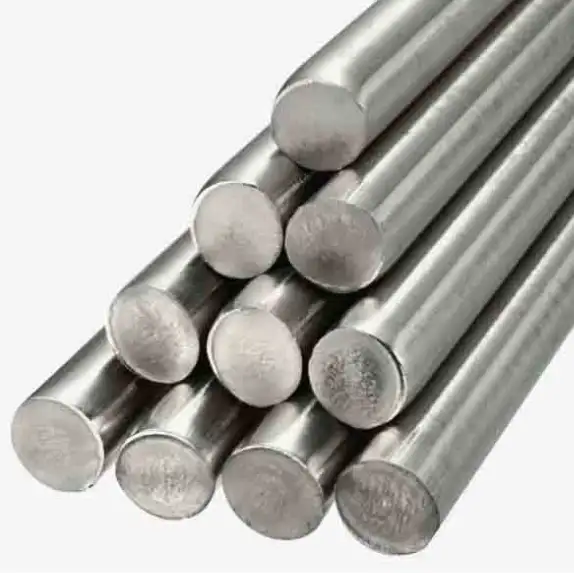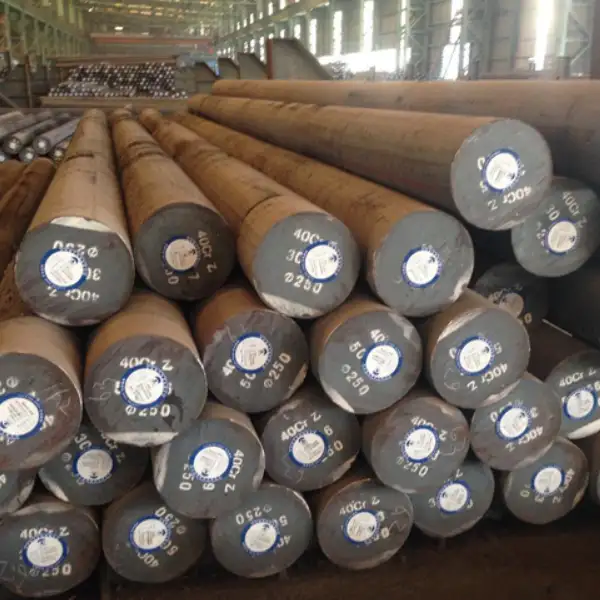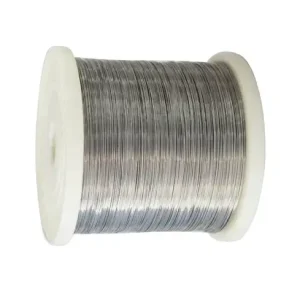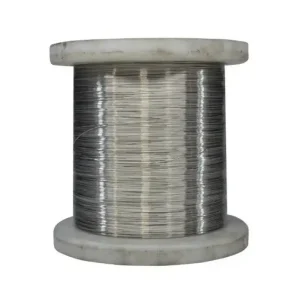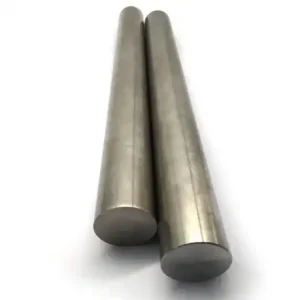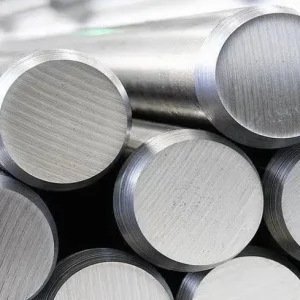40Cr steel round bar is a medium-carbon, chromium-alloyed quenched-and-tempered steel widely used for shafts, gears, spindles and structural machine parts where a balance of strength, toughness and good hardenability is required. For buyers seeking reliable supply from China at factory prices and fast lead times, MWAlloys offers mill-direct 40Cr round bars (full traceability, factory pricing, and steady stock for common diameters).
What is 40Cr steel?
Definition & role.
40Cr is a medium-carbon chromium alloy steel under the Chinese GB/T 3077 family (often supplied in hot-rolled or forged round bars). It is designed to be quenched and tempered to obtain a combination of tensile strength, toughness and wear resistance. In global nomenclature it is commonly cross-referenced to AISI/SAE 5140, DIN/EN 41Cr4 / 1.7035, and JIS SCr440.
Brief history & practical note.
This grade evolved to meet the need for components that must be stronger and more hardenable than plain carbon steels (e.g., 45/1050), while remaining cost-effective compared with more highly alloyed steels. It is widely stocked as round bar and forged blanks and is a go-to choice for mid-duty shafts, gears and linkages.
Chemical composition — standard ranges
Below is a concise table with the commonly accepted chemical composition ranges used by major standards (GB/T, ASTM/SAE, EN/JIS). Small differences occur by standard and by supplier; always verify the mill certificate (MTC).
| Element | Typical range for 40Cr / 5140 / 41Cr4 (wt.%) |
|---|---|
| Carbon (C) | 0.37 – 0.45 |
| Silicon (Si) | 0.15 – 0.40 |
| Manganese (Mn) | 0.50 – 0.90 |
| Chromium (Cr) | 0.70 – 1.20 |
| Phosphorus (P) | ≤ 0.035 |
| Sulfur (S) | ≤ 0.035 |
| Note | Minor elements (e.g., Mo, Ni) normally absent in standard 40Cr; special or modified grades can include small additions. |
(Sources and consolidated standard ranges.)
Commentary on chemistry:
-
Carbon controls core strength and hardenability; 40Cr sits in the medium-carbon range.
-
Chromium (≈0.8–1.1%) increases hardenability and wear resistance without drastically reducing weldability.
-
Silicon and manganese are deoxidizers and contribute to strength.
Always accept supplier certificates and spectro reports when chemical composition is critical for your application.
Material properties — mechanical & physical
The properties below reflect typical guaranteed ranges for quenched & tempered or normalized conditions from mill datasheets and standards. Exact properties depend on heat treatment, section size and supplier.
Mechanical properties (typical / guaranteed ranges)
| Property | Typical value (quenched & tempered condition, as supplied by many mills) |
|---|---|
| Tensile strength (σᵤ) | 800 – 1100 MPa (typical depending on tempering) |
| Yield strength (σ₀.₂ or Rₚ₀.₂) | 600 – 900 MPa (varies with tempering) |
| Elongation (A₅) | ≥ 9% (commonly ≥ 9%) |
| Reduction of area (ψ) | ≥ 45% |
| Impact energy (Charpy V-notch) | ≥ 47 J (25 mm sample typical in spec) |
| Brinell hardness (annealed/high-temp temper) | ≤ 207 HB (annealed state) |
| Hardness after quench/tempering | variable (e.g., 25–40 HRC typical depending on tempering) |
(Representative datasheet ranges — confirm with MTC for a specific heat and temper.)
Physical properties (approximate)
-
Density: ≈ 7.85 g/cm³ (7,850 kg/m³)
-
Young’s modulus: ≈ 210 GPa
-
Thermal conductivity and expansion are similar to other medium-carbon steels.
40Cr steel round bar specifications — sizes, tolerances, delivery conditions
Common supply forms. Round bars supplied hot-rolled, normalized, annealed, bright/turned (cold drawn) or quenched & tempered; typical length 3–12 m (cut lengths available). Mills commonly mark with heat number and supply an MTC.
Typical dimensional range (examples):
-
Diameters commonly stocked: 18 mm — 320 mm (small-dia machining bars to large forgings). Suppliers can offer custom diameters and lengths.
Tolerances & finish:
-
Hot-rolled black bars have wider tolerances; bright/turned bars meet tighter tolerances for machining.
-
Surface conditions: black, turned, ground, or bright; ends usually sawed and bar ends identified with heat no.
Metal forming & heat-treatment processes for 40Cr round bars
40Cr responds well to common steel fabrication and heat-treatment methods. Below is a practical overview.
Primary metalworking routes
-
Hot rolling / forging — primary shaping for bars and blanks; typical forging temperatures 1100–850 °C.
-
Cold drawing / turning (bright finish) — improves surface, straightness and dimensional tolerance for smaller diameters.
-
Machining — 40Cr is machinable in annealed or normalized state; machinability drops when hardened. Carbide tooling recommended for hard conditions.
Heat treatment (key cycles and targets)
-
Annealing (softening): heat to ~680–720 °C, slow cooling to reduce hardness (→ ≤ 207 HB). Used to improve machinability.
-
Normalizing: 840–880 °C, air cool — refines grain and improves toughness.
-
Hardening (quench): austenitize roughly 820–860 °C, quench (oil typical) — produces martensitic structure. Quench severity depends on section thickness.
-
Tempering: usually 520–680 °C depending on target hardness/toughness; higher tempering temperatures yield lower hardness but better toughness.
Surface hardening:
-
40Cr is well suited to induction or flame hardening and also responds to carburizing if higher surface hardness is required (but 40Cr is not a dedicated case-hardening steel—choose the right alloy if deep case is required).
International equivalents (quick cross-reference)
| China | AISI/SAE / ASTM | DIN / EN | JIS |
|---|---|---|---|
| 40Cr (GB/T 3077) | 5140 (AISI/SAE/ASTM) | 41Cr4 / 1.7035 (EN/DIN) | SCr440 (JIS) |
How to use cross-references: equivalents are close but not identical; always confirm composition and mechanical specs before substitution, especially for critical or safety parts.
What 40Cr round bar is used for
Common applications where 40Cr round bar is chosen:
-
Shafts and axles (driveshafts, transmission shafts) — good balance of strength and toughness.
-
Gears and splines (medium duty) — can be case-or surface-hardened.
-
Mechanical couplings, studs and pins — where moderate wear resistance is needed.
-
Tooling components for medium wear loads (jigs, fixtures).
-
Automotive parts — steering knuckles, rear axle components, etc.
Selection tip: For parts subject to high cyclic load or fatigue, prefer properly heat-treated 40Cr with controlled grain size and NDT, or a higher-alloy grade if environment and duty demand it.
40cr Steel Bars Sizes & weight
Weight formula (metric):
Weight (kg/m) ≈ 0.006165 × D², where D is diameter in mm. (Engineering Toolbox uses a rounded constant 0.00617 or 0.0062 depending on units). For common use we use: W(kg/m) = 0.00617 × D(mm)².
Example diameter → weight per metre (rounded):
| Diameter (mm) | Weight (kg/m) (approx.) |
|---|---|
| 12 | 0.89 |
| 16 | 1.58 |
| 20 | 2.47 |
| 25 | 3.85 |
| 32 | 6.31 |
| 40 | 9.86 |
| 50 | 15.4 |
| 65 | 26.0 |
| 75 | 34.7 |
| 100 | 61.6 |
(Use the formula above for intermediate sizes; verify with supplier weight charts for exact shipping calculations.)
40CR Steel Bar Price comparison
Important note on price transparency: steel prices vary rapidly with raw materials, freight, quantity, surface finish, tolerances, and contractual terms. The numbers below are market snapshot ranges for 40Cr/5140 alloy round bar as of 2025 (illustrative; verify quotes from mills or authorized distributors). Sources are live supplier listings and market price indices — ranges overlap because suppliers sell different quantities (small orders retail vs. mill lots).
| Region | Indicative 2025 price range (USD / metric tonne) | Notes / typical buyer conditions |
|---|---|---|
| China (mill/FOB) | USD 500 — 1,300 / t | Wide range: small traders list lower prices for large bulk shipments; factory prices for standard hot-rolled bars commonly quoted USD ~600–1,200/t depending on quantity and spec. See Alibaba / Made-in-China supplier listings. |
| USA (domestic retail / service center) | USD 1,200 — 2,500 / t (equivalent) | US retail for small qtys and specialty alloy bars is higher; distributors sell cut lengths and service. Onlinemetals and regional service centers display per-piece retail prices reflecting higher unit costs and logistics. |
| Europe (distributor/mill) | EUR 900 — 2,200 / t (approx. USD 1,000 — 2,400/t) | European prices depend on EN standard supply and heat-treatment. Larger orders from mills lower unit price. Price indices for hot-rolled products are tracked by CRU/SteelBenchmarker. |
Why the ranges are wide
-
Small order retail vs. direct mill FOB bulk orders.
-
Finish: bright/ground/turned bars cost more than black hot-rolled.
-
Heat treatment / certification (full MTC, PMI, NDT) adds cost.
-
Global logistics and duties influence landed cost.
How MWAlloys positions price & lead time
MWAlloys works with Chinese mills and keeps stock for common diameters; we quote 100% factory price for bulk orders and can typically ship stock items faster than brokers — contact for live FOB/FOB+logistics quotes (lead time depends on quantity and spec).
Quality, testing and what to request from suppliers
When purchasing 40Cr round bars, ask for:
-
Mill Test Certificate (MTC / EN 10204 3.1 or 3.2) — mandatory for critical components.
-
Chemical analysis report — spectro reading for each heat.
-
Heat treatment chart — the austenitizing temp, quench medium, temper temperature.
-
NDT (ultrasonic / magnetic particle) results for critical forgings or large diameter bars.
-
Hardness test results (Brinell/HRC) and tensile test (if required).
-
Traceability & heat no. on each bar (important for warranty and failure analysis).
Additional tests for special service: fatigue testing, metallographic grain size, and coating/adherence testing (if plated or coated) are available on request from reputable mills.
FAQs
-
Q: Is 40Cr the same as 5140?
A: They are widely equivalent for many applications (40Cr ≈ AISI/SAE 5140; EN equivalent 41Cr4/1.7035). Always compare exact composition and mechanical specs from the MTC. -
Q: Can 40Cr be welded?
A: Yes, with preheat and proper procedure, but welding may reduce toughness near the HAZ. For heavily stressed welded assemblies choose proper post-weld heat treatment or a more weldable grade. -
Q: What hardness can 40Cr reach?
A: After quench and temper it can reach ~25–40 HRC depending on temper; annealed state ≤ 207 HB. Exact values depend on heat treatment and section size. -
Q: Is 40Cr good for carburizing?
A: It can be surface-hardened, but dedicated case-hardening steels (e.g., 20Cr, 20MnCr5) are usually preferred for deep cases. 40Cr is often induction or flame hardened for local surface hardening. -
Q: What is the typical delivery condition for round bars?
A: Hot-rolled black, normalized, annealed or bright/turned — specify finish and tolerances when ordering. -
Q: Which industries commonly use 40Cr?
A: Automotive, heavy machinery, gearboxes, agricultural equipment, and general engineering components. -
Q: How to calculate weight for shipping?
A: Use W(kg/m) = 0.00617 × D(mm)². See supplier weight charts for confirmation. -
Q: How should I inspect delivered bars?
A: Verify MTC, perform visual inspection, check heat number, and request hardness or tensile test pieces if application critical. Consider NDT for large diameters. -
Q: Are there high-strength variants of 40Cr?
A: Variants exist (e.g., specified as 40CrA / 40CrE under GB/T) or through stricter heat treatment; for significantly higher strength consider other alloy families. -
Q: How to choose between 40Cr and 4140/42CrMo4?
A: 42CrMo4 has more Mo and thus higher hardenability and strength for thicker sections; 40Cr/5140 is economical for medium sections. Match to design loads and heat-treatment capability.

